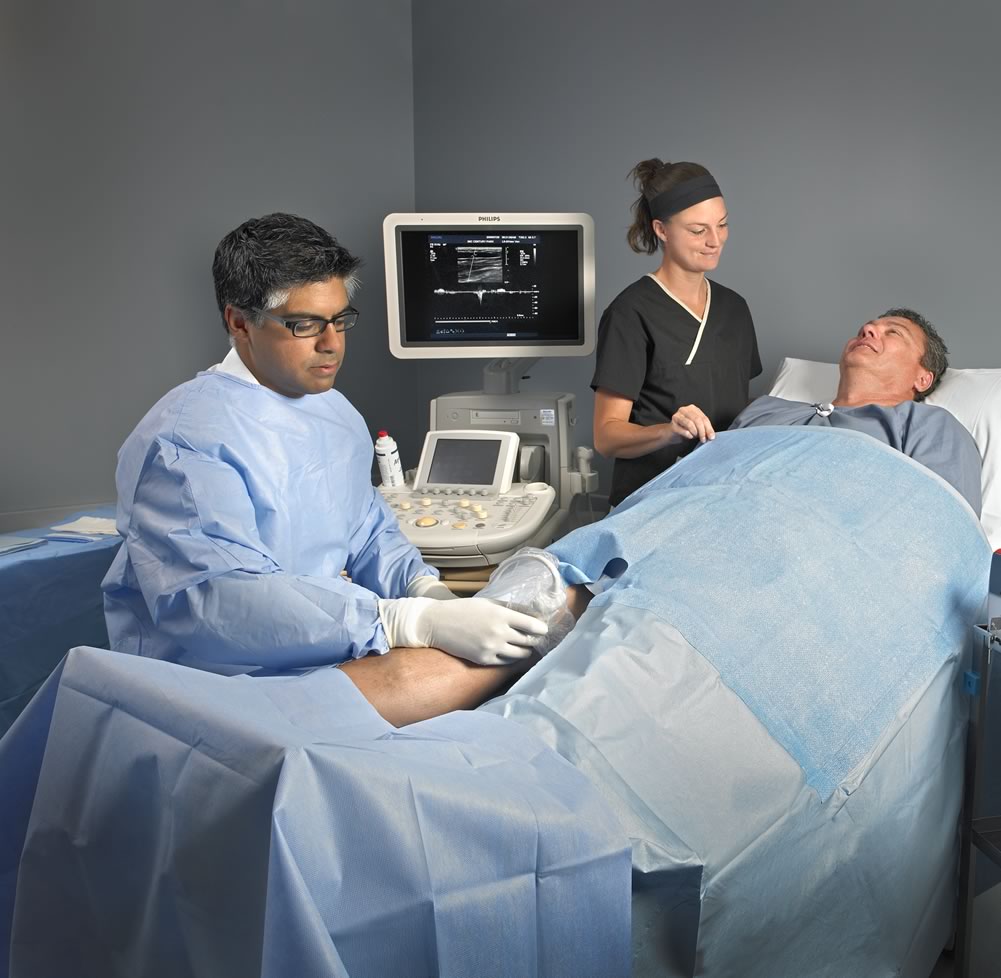Radiofrequency Ablation Exam Prep
Find out when you book
Medically reviewed by Dr. Rohan Parab, M.D, FRCPC (Diagnostic Radiology), FRCPC (Interventional Radiology)
What is Radiofrequency Ablation?
Radiofrequency Ablation (RFA) is a minimally invasive method for treating varicose veins without the need for surgery. Heat is used to destroy the varicose vein walls, shrinking them and closing the faulty veins.
Radiofrequency Ablation Procedure Details
- Upon arrival, patients are asked to change into a gown. The procedure begins by mapping out the vein of interest using ultrasound.
- Once the vein is mapped, the patient is positioned on the exam table, their leg is cleaned, and sterile drapes are placed around the area of interest.
- Next, the entry site is numbed using a local anesthetic. A needle is placed through the skin, and a guidewire is advanced into the vein. Patients may feel this, but it should not cause any pain or discomfort.
- A sheath (tube) is positioned over the guidewire using ultrasound guidance, and position is confirmed through imaging. The RFA fibre is inserted into the sheath, and more freezing is placed along the area of interest.
- The treatment fibre is turned on and pulled along the vein – using heat to close the channel. Altogether, the catheter is only on for 2-3 minutes total.
- After the fibre is removed, pressure is held at the access site until the bleeding has stopped.
- A sterile strip is applied, which can be removed after 48 hours. Lastly, a medical-grade compression stocking is applied, and patients are encouraged to walk around for five minutes.
RFA Recovery
For proper recovery, patients must walk around immediately following the ClosureFast procedure to promote circulation. The treatment results in minimal after-procedure pain, has a short recovery period, leaves minimal to no scarring, and can provide almost immediate relief for most symptoms.
Furthermore, published clinical studies show at 5 years, ClosureFast has a reflux free rate of 94.9% (Proebstle et al., 2015).
Radiofrequency Ablation Costs
Radiofrequency ablation provided by MIC is not covered by Alberta Health Care. This procedure costs $2,300 for one leg or $4,000 for both legs.
Return Visits and Post Procedure Timeline
All patients must return for one additional visit following their procedure to look for complications:We will perform an ultrasound seven to ten days later to rule out any post-procedure complications such as deep vein thrombosis (DVT). This complication is extremely rare, occurring in approximately 0.003% of cases.
We will also check for patchy numbness, which results from irritation to superficial nerves adjacent to treated veins. Patchy numbness occurs in approximately 0.006% of cases. Most cases spontaneously resolve after 3-6 months.
After two weeks, you can return to all activities, including vigorous exercise.
After 8-12 weeks, your doctor will re-assess your veins using ultrasound to ensure treatment success.
Common RFA Post Treatment Occurrences
The most common post-treatment occurrences are brown discolouration of the skin (hyper-pigmentation), bruising, and small, localized areas of trapped blood. Approximately 1 in 3 patients will experience hyper-pigmentation or trapped blood. The discolouration is more likely if the skin colour is olive or dark, the patient is taking iron supplements or antibiotic medications. Trapped blood is more likely if patients do not wear compression stockings. Skin discolouration may persist for weeks.
Additional Information
- Endovenous Ablation takes 1 hour, however, please plan to be at the clinic for 2 hours.
- Patients must arrange for transportation after their procedure.
- Please avoid alcohol and caffeine-based products before the procedure.
- “Tightness” over the vein is normal and may feel like a “pulled muscle.” To reduce this tightness, we encourage patients to continue walking.
